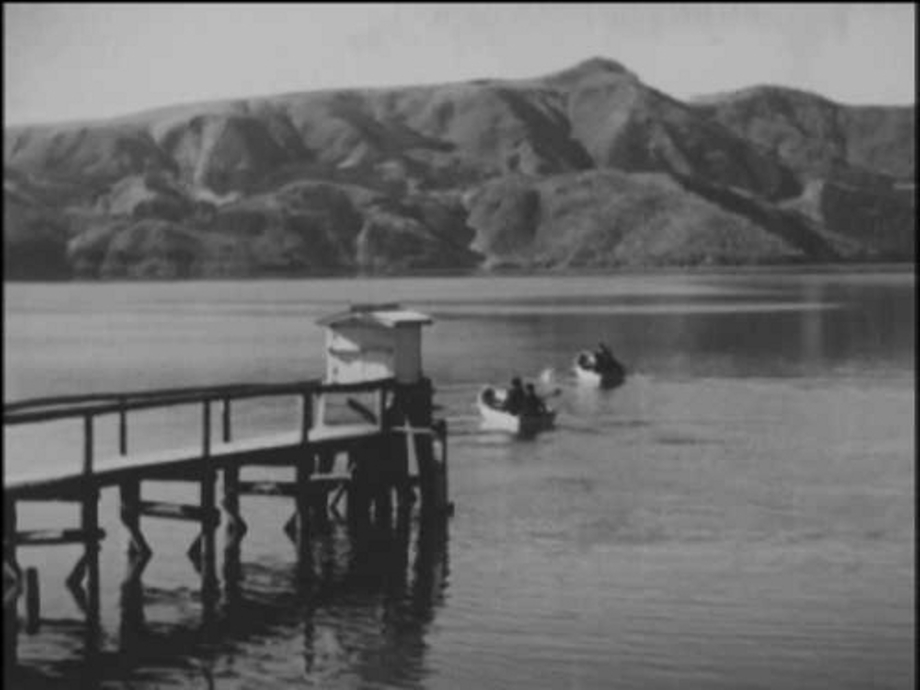
Throughout this six minutes, large part of dark areas are provided by human figures (students and teachers) since they wear dark uniforms or suits, while the brighter areas are from background.
The first few seconds of this segment show very prominent power in brighter end of grayscale spectrum. The images show the white mountain ranges beyond, with dark foreground. Then it cuts to the dark figures, the teacher (supposedly Horikawa) and the students marching on the bright ground, with their back toward the audience. Then, the view of the Mount Fuji over the Lake Ashinoko with the dark framing tree is used as another pillow shot. The composition is almost one of those picture postcards. The shot of the hallway in the hotel is also dominated by the black of umbrellas. The room is filled with students, wearing dark uniforms.
The whole sequence leading to the accident is framed by the shots of Soga brothers tombs. As mentioned earlier, this image of the tombs signifies the path to the “other” world. The second shot of the tombs at Scene 549 has a bright upper half with dark tombstones, creating more stark contrast. You can see the large power is concentrated in the brighter end of spectrum for this shot, and stands out in this whole six minute segment. Another shot with considerable power at the brighter end of spectrum is at Scene 471, the boats before the tragedy. It seems when we glimpse the gate to the “Other” world, the shot presents a strong power at the brighter end. Is this coincidence?
It is quite peculiar that few of the characters in this sequence except Horikawa has name, identity or memorable trait. The student who meets the tragic accident is never introduced, and all other students are just dark lumps in the image. Horikawa being the only person we can identify, we are completely left detatched from the tragedy. This creates the sensation of sudden shock with no tangible narrative. But the tragedy in real life may not have narrative as we know it in art.
The procession of the wake is shifted toward dark end. Night, Horikawa in dark suits, the students in dark uniforms (as if they had prepared for this), all who survived sink into black void, while a moth attracted to the bright bulb is chasing the mirage of its short life.
The following exchange between Horikawa and Hirata creates the gloomy atmosphere with Horikawa wearing the dark kimono as a focal point. This consistency of Horikawa’s dark outfit signifies his psychological burden and guilt he has to bear throughout the film.

